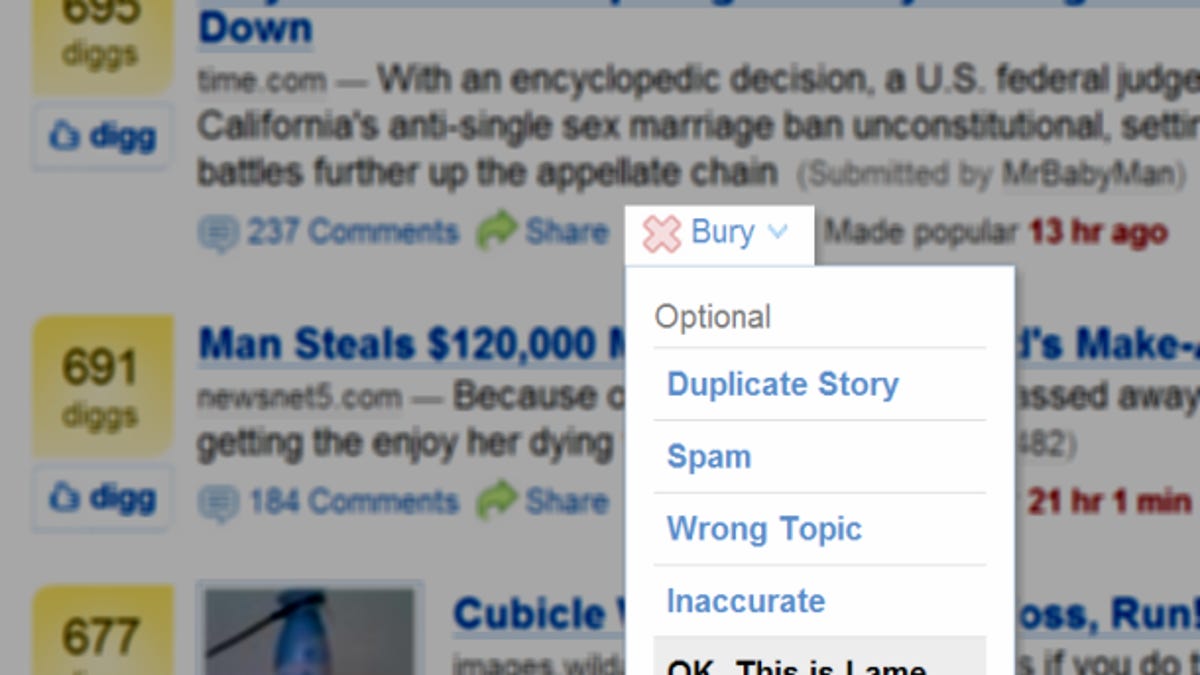Digg bringing back the bury, changing its look
Digg's new CEO says changes are in the pipeline that should alleviate some of biggest user gripes users have been having since the site's August overhaul.
In a note introducing himself to users, Digg's latest CEO Matt Williams, who came on at the end of August, today penned an apology to the Digg community, saying that changes are on the way that should remedy some of the biggest complaints that have cropped up since the company completely retooled the site in late August.
"As many of you know, the launch of Digg v4 didn't go smoothly, and we're deeply sorry that we disappointed our Digg community in the process," Williams said. "Thank you for your patience and your extremely candid feedback--we hear you loud and clear."
Within Williams' note is a list of things that will be changed, or brought back to the site, including the return of the bury button. This was something that gave users a considerable amount of power to control what appeared on the site's front page, though also became problematic when used by groups with an agenda. Digg had removed the feature to combat this, and in its place had added story hiding and reporting tools that would alert the site's staff if enough reports had been lodged, though that too became problematic when users found Digg's response time on such issues less than ideal.
Another feature that Williams said would be here in the "next few weeks" is a way to flag comments, something aimed at users who may have felt like the site's controls for regulating discussion had been taken away from them. Joining that is a return of the navigation links to videos and images--two sections that went away in version four, as well as a tweak to the site's Top News algorithm and Digg's "overall site design."
This last item about the design may be one of the most interesting tidbits of Williams' note, since just a month and a half earlier, Digg co-founder, then-interim CEO Kevin Rose, had said that the look of the site was there to stay. "If something is unusable (hard to read etc.) please let us know," Rose had said.
Digg launched version four of its social news site in August after several months of private beta testing. One of the core changes of the site was that Digg gave publishers a way to have their stories be submitted automatically, effectively sidestepping the need for users to submit links. This went hand in hand with a section called "My News" that would serve up stories based on who a user was friends with and what publishers they were following. This page, instead of the site's top news section, became the default, and one of the big reasons many longtime Digg users grew unhappy with the site and its new direction.
Despite any exodus that may have occurred, Williams pointed out that the site brought in 23 million unique visitors in August, and that the new version is faster than the one that came before it. Even so, he admitted that the changeover had not been smooth. "Digg has always been a place where users help one another find out what's interesting, fun, and important. Unfortunately, our relaunch managed to get in the way of that happening."


